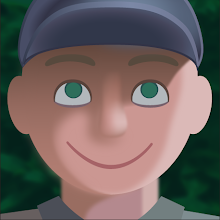Due to the distressed nature of the architectural surfaces, my attention to detail needed to be more acute than usual. For such a task, photographic reference is useful as a reminder of how things decay.
In my studies, I noted that ...
- More dirt will find its way into the concave edges of surfaces.
- The convex edges of a surface are more worn from contact, making them smoother and shinier.
- More staining and damage occurs near the bottom of a wall.
- With age, the gaps between wall and floor expand and become jagged. Sometimes these gaps are filled with sealant, usually in a sloppy manner.
It was an interesting though tedious study. I wasn't super meticulous with the detail. I just tried to create enough so that the fakery isn't too obvious.
 |
| composite, before & after |
|
For a multipass composite, a 2D rendering from a 3D program is
separated into multiple images, then recombined in a 2D program. This provides greater control over the image quality, and
results in better volume and spatial depth, and a more precise implementation of
simulated lens effects: i.e, more realism.
 |
| render passes |
This is my first complex composite in Nuke. My previous Nuke composites just used a motion vector pass and reflection pass. This doll composite uses 10 passes: direct light, ambient light, specular, reflection, refraction, shadows, occlusion, subsurface scattering, z-depth, and masks.
 |
| Nuke node graph for doll composite |










No comments:
Post a Comment